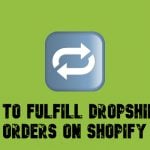How to Dropship on Shopify: Step-by-Step Guide for Beginners (2025)
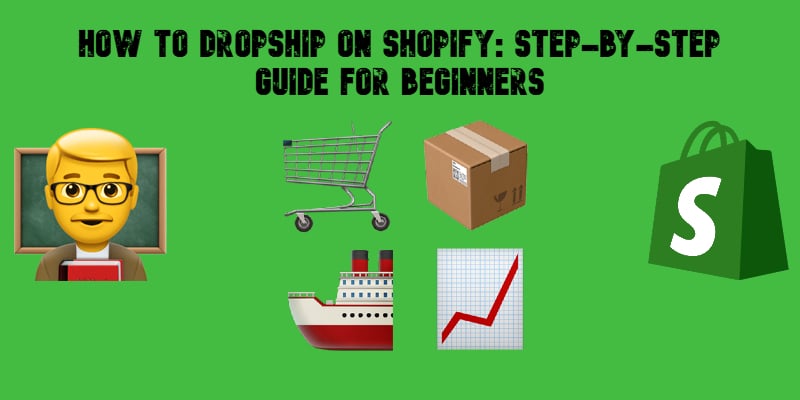
Dropshipping on Shopify has become one of the most popular ways to launch an e-commerce business with minimal upfront investment. But how to dropship on Shopify in 2025? Well, nothing has changed much. Unlike traditional retail, where sellers need to buy and store inventory, dropshipping allows you to sell products without holding stock — your suppliers handle fulfillment while you focus on sales and marketing. This low-risk model still makes it an accessible business opportunity in 2025, but success requires the right strategy, supplier selection, and automation tools.
This step-by-step guide will walk you through everything you need to know about how to start dropshipping on Shopify, from setting up your store in the Shopify admin and choosing profitable products to finding reliable suppliers and scaling your business. You’ll learn how to automate fulfillment, drive traffic through SEO and paid ads, and navigate common challenges like shipping delays and supplier issues.
Shopify offers powerful integrations with top dropshipping suppliers like AliExpress, Spocket, and Zendrop, but what if your preferred supplier doesn’t integrate with Shopify? We’ll cover how to import products and manage orders manually using the Import & Export Tool for Shopify.
By the end of this guide, you’ll have a clear roadmap to building a profitable Shopify dropshipping business in 2025. Whether you’re a beginner or looking to optimize your existing store, this guide will help you navigate the opportunities, risks, and strategies needed for success.
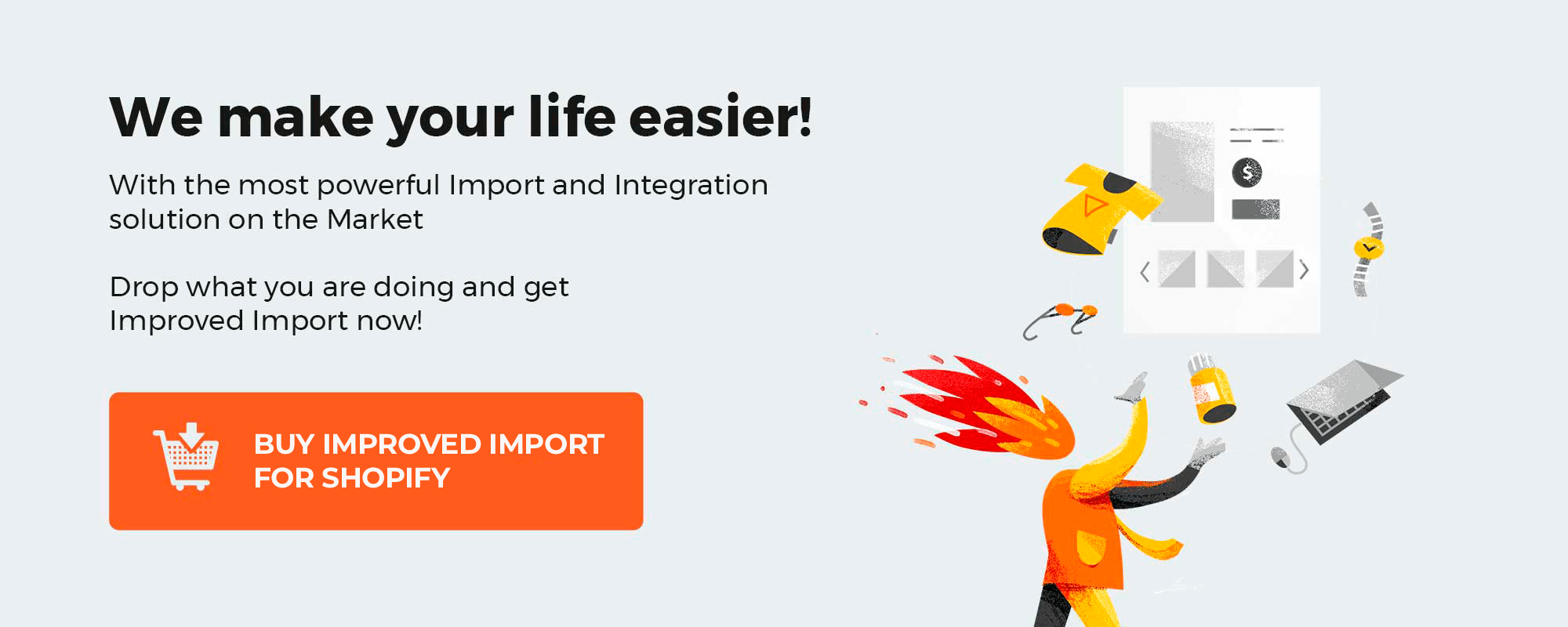
Table of contents
Introduction: What Is Shopify Dropshipping?
E-commerce has never been more accessible, and Shopify dropshipping has emerged as one of the easiest ways to launch an online business with minimal upfront investment. But what exactly is dropshipping on Shopify, and why is it such a popular business model?
At its core, Shopify dropshipping allows entrepreneurs to sell products without holding inventory. Instead of stocking items in a warehouse, you partner with third-party suppliers who handle storage, packaging, and shipping directly to your customers. This means no upfront inventory costs, making it a low-risk and scalable business model for beginners and seasoned e-commerce sellers alike.
Shopify’s user-friendly interface and extensive dropshipping integrations make it an ideal platform for launching a store. Here’s why Shopify dropshipping is a game-changer:
- Minimal Startup Costs — No need to invest in inventory or warehouses. You only pay for products once customers order them.
- No Inventory Management — Say goodbye to packing, storing, or shipping orders. Your suppliers handle it all.
- Scalability — Start small and grow without worrying about logistics. Whether you receive 10 or 10,000 orders, fulfillment remains automated.
- Easy Setup — Shopify provides pre-built themes, marketing tools, and app integrations, allowing even non-technical users to launch a store in hours.
Ready to start? Let’s explore how Shopify dropshipping works and why it’s one of the most profitable e-commerce models today.
How Dropshipping Works on Shopify
Unlike traditional retail, where you buy inventory upfront and store it yourself, dropshipping on Shopify follows a supplier-driven model, making it low-risk and highly scalable.
The Shopify dropshipping process follows a simple yet efficient pattern:
🛒 Customer buys from your store → 📦 Order is sent to supplier → 🚛 Supplier ships to customer → 🎉 You keep the profit
But there are a few more nuances to consider. When a customer purchases a product from your Shopify store, they purchase it at a retail price you set.
Your dropshipping supplier (e.g., AliExpress) receives the order details. If there is an official integration, everything happens automatically. If there is no official connector, you either need to provide order details manually or with the help of a third-party solution, such as the Import & Export Tool for Shopify.
Next, the supplier packs and ships the product directly to the customer under your brand. However, you still need to fulfill it in your Shopify admin, providing a customer with tracking information. And here we go again: if there is an official connector, this process is automated. If there is no connector, you have to spend some time and effort on manual order fulfillment. Want to automate order fulfillment? Check out our detailed guide: How to Fulfill Dropshipping Orders on Shopify.

Finally, the customer receives the package and you collect the profit — the difference between the retail price (what the customer paid) and the wholesale cost (what you paid the supplier).
How to Dropship on Shopify: Pros and Cons
While Shopify dropshipping offers a low barrier to entry, it’s not without its challenges. Let’s break down the key pros and cons.
✅ Advantages of Shopify Dropshipping
✔ No Inventory Management — No need to store, pack, or ship products. Suppliers handle it all.
✔ Low Startup Costs — You don’t have to invest in inventory upfront. Pay only when a customer orders.
✔ Scalability — Whether you receive 5 or 500 orders a day, fulfillment usually remains automated.
✔ Product Variety — Test multiple products and niches without financial risk.
✔ Easy to Get Started — Shopify offers user-friendly dropshipping apps like DSers, Spocket, and Zendrop to connect you with suppliers instantly.
❌ Disadvantages of Shopify Dropshipping
✖ Lower Profit Margins — Since you’re buying products one at a time, bulk discounts are limited.
✖ Longer Shipping Times — Many suppliers are overseas, leading to slower delivery times.
✖ Supplier Dependence — Stock availability and fulfillment quality rely on your supplier.
✖ High Competition — Popular niches often have many competing sellers.
✖ Potential Refund Issues — Since you don’t handle the inventory, returns and refunds can be complex.
Choosing the right suppliers is crucial for minimizing risks. Learn how to find the best Shopify dropshipping suppliers in our detailed guide: Best Dropshipping Suppliers for Shopify.
Now that you understand how dropshipping works on Shopify, the next step is to set up your Shopify store for success.
How to Dropship on Shopify: 6 Basic Steps For Every Beginner
Below, we explain how to dropship on Shopify. You will learn 6 basic steps every merchant should consider when choosing this business model.
Step 1: Setting Up a Shopify Store for Dropshipping
Setting up a Shopify store for dropshipping involves more than just creating an account — it requires selecting the right plan, designing a store that converts, and configuring essential settings to ensure smooth operations. Shopify’s built-in tools, integrations, and ease of use make it a top choice for dropshippers looking to scale their businesses.
1. Creating a Shopify Account and Choosing a Plan
To get started, visit and click “Start Free Trial.” Shopify offers a three-day free trial, after which you must select a subscription plan to continue operating your store.
Shopify provides different pricing tiers, catering to businesses of all sizes. The Basic Shopify Plan ($24/month) is best for beginners testing the market, offering essential e-commerce tools without high upfront costs. As your business scales, you may upgrade to the Shopify Plan ($69/month) for enhanced analytics or the Advanced Plan ($299/month) for advanced reporting and lower transaction fees.

If you are unsure which plan suits your business needs, refer to our detailed breakdown of Shopify’s pricing, hidden fees, and additional costs in How Much Does Shopify Cost? Monthly Pricing and Hidden Fees Explained.
2. Customizing Your Shopify Store
The next step is to customize your Shopify website’s design to make it visually appealing, mobile-friendly, and optimized for conversions. Shopify provides a selection of free and premium themes, allowing you to design a professional store without needing technical skills. Themes such as Dawn, Refresh, and Craft are excellent free options, while Debutify, Booster, and Shoptimized are premium themes optimized for high conversion rates.
If you need help choosing the best Shopify theme for your store, refer to our selection of The Best Free Shopify Themes.
To modify your Shopify theme, navigate to Shopify Admin > Online Store > Themes, select a theme that suits your niche, and click “Customize.” From here, you can adjust your homepage layout, add product images, and ensure that your branding elements (logo, fonts, colors) create a cohesive shopping experience
3. Configuring Essential Shopify Store Settings
Proper configuration of store settings, payment gateways, shipping policies, and tax settings is essential to ensure a seamless shopping experience. The platform provides an intuitive backend for managing all aspects of your store efficiently. If you are new to Shopify, learning how to navigate the Shopify Admin panel will be beneficial. You can find a comprehensive guide on how to manage store settings, product pages, customer orders, and more here: Shopify Admin: Everything You Need to Know.
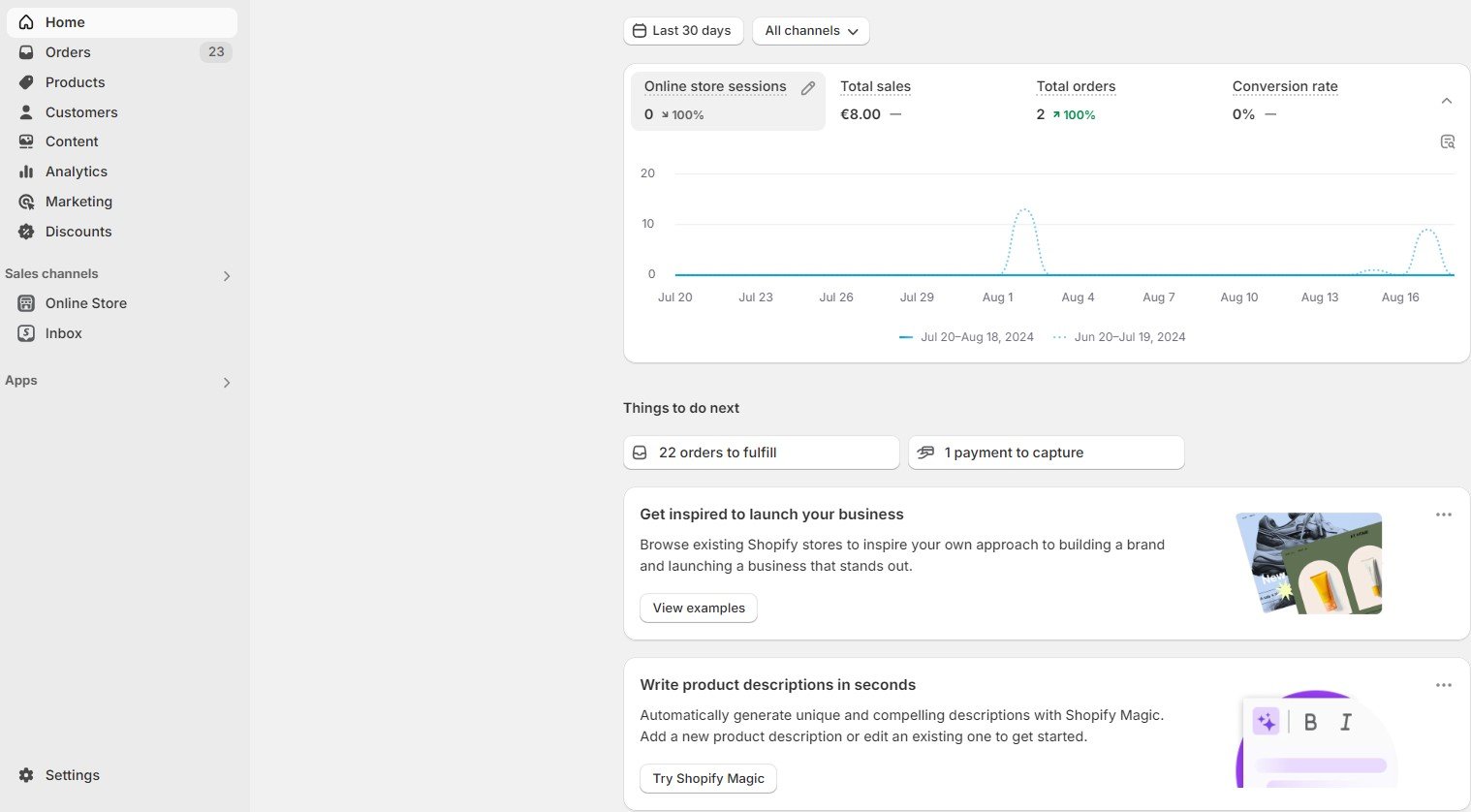
Every dropshipping store should have key informational pages that help establish trust and compliance. Ensure your store includes a homepage that highlights your brand, product pages with detailed descriptions and high-quality images, and legal pages such as a refund policy, shipping policy, and terms of service. If you want to introduce store visitors to your team, create a “Meet the Team” page.
Setting up payment methods is another crucial step. Shopify supports multiple payment gateways, including Shopify Payments, PayPal, Stripe, and third-party providers. You can enable a payment method by navigating to Shopify Admin > Settings > Payments and selecting the provider that suits your business.
Shipping configuration depends on your chosen suppliers. You can manage shipping rates under Shopify Admin > Settings > Shipping and Delivery.
Similarly, tax collection should be configured according to your business location. Shopify offers an automatic tax calculation feature that can be enabled under Settings > Taxes and Duties.
With your Shopify store now set up and optimized, the next critical step is to source and add high-margin products to your catalog.
Step 2: Finding Products to Sell
Once your Shopify store is set up, the next crucial step is selecting profitable dropshipping products. Since you won’t be holding inventory, your success depends on sourcing high-margin, in-demand items from reliable suppliers. This section will guide you through product selection strategies, winning niches, and top research tools to help you build a competitive product catalog.
Identifying the Best Dropshipping Niches
Not all products are suitable for Shopify dropshipping. The best-performing items typically have low competition, high demand, and solid profit margins. Below are some of the most profitable dropshipping niches that perform well year-round:
- Technology & Gadgets – Wireless chargers, smart home devices, Bluetooth accessories.
- Fashion & Accessories – Sunglasses, watches, activewear, minimalist jewelry.
- Pet Supplies – Interactive toys, pet beds, and feeding accessories.
- Home & Kitchen – Portable blenders, space-saving organizers, LED lighting.
- Beauty & Skincare – Organic skincare, LED face masks, and nail kits.
Trendy products change frequently, so market validation is essential before adding items to your store.
If you are unsure whether a niche is profitable, refer to for insights from experienced sellers.
How to Find Winning Shopify Dropshipping Products
Selecting the right products involves researching trends, analyzing demand, and ensuring supplier reliability. Here are the best methods for identifying winning dropshipping products:
- Google Trends – Analyze search interest over time to find trending products.
- AliExpress Dropshipping Center – Discover high-demand products based on sales data.
- AutoDS Product Research Tool – Find low-competition, high-profit dropshipping products.
- Spocket & Zendrop – Identify reliable suppliers offering fast-shipping products.
Using a combination of research tools helps ensure that the products you add to your store are not only trendy but also profitable and scalable.
How to Add Products to Your Shopify Store
Once you’ve found the right products, the next step is to import them into your Shopify store. This can be done manually or through dropshipping automation apps.
For suppliers who don’t provide direct Shopify integration, you can manually add products using the Shopify Admin:
- Go to Shopify Admin > Products > Add Product.
- Enter product name, description, and price.
- Upload high-quality images and set product variants (size, color, etc.).
- Define shipping rates and inventory tracking settings.
- Click “Save” to publish the product.
Need to bulk import products from suppliers who don’t integrate with Shopify? Learn how in Step 5: Importing Products Without Supplier Integrations.
To streamline product imports, consider using dropshipping apps that sync suppliers directly with Shopify:
- – Automates AliExpress dropshipping fulfillment.
- – Provides access to high-quality U.S. and EU-based suppliers.
- – Offers advanced product research and automation tools.
- – Ensures faster shipping times compared to standard AliExpress suppliers.
These apps allow you to import products in one click, set automated pricing rules, and manage inventory efficiently. But how to find trustworthy suppliers to ensure reliable fulfillment and customer satisfaction.
Step 3: Finding Reliable Dropshipping Suppliers
Choosing the right suppliers is one of the most critical steps in building a successful Shopify dropshipping store. The suppliers you work with will directly impact your product quality, shipping times, and overall customer satisfaction. This section will cover the best Shopify dropshipping suppliers, where to find them, and how to evaluate their reliability.
Where to Find Dropshipping Suppliers for Shopify
Not all dropshipping suppliers are created equal. Some offer low-cost products, while others focus on fast shipping, premium quality, or regional availability. The right supplier depends on your niche, target audience, and fulfillment strategy. Below are some of the best supplier marketplaces for Shopify dropshipping:
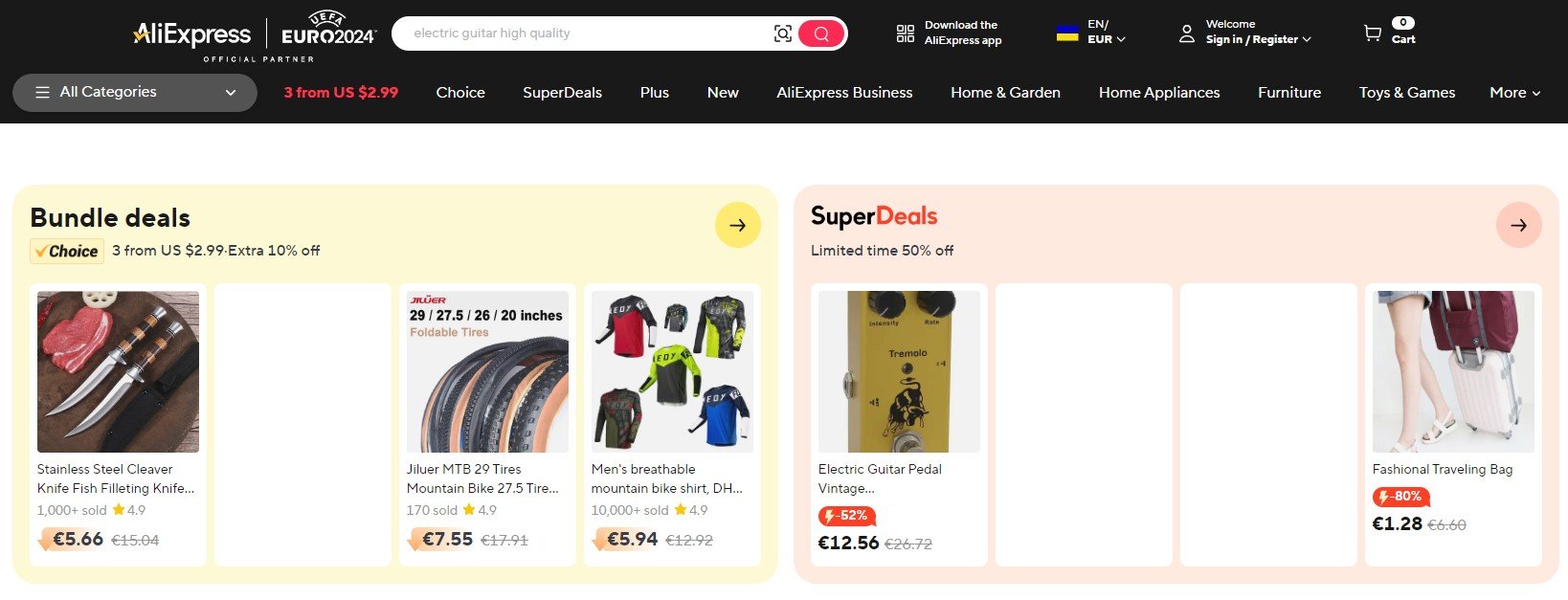
- AliExpress – Best for Low-Cost, High-Variety Products. AliExpress is one of the most popular supplier marketplaces for Shopify dropshippers. It offers a vast selection of low-cost products across nearly every niche.
Pros:
– Large product variety,
– No minimum order requirements,
– Integration with DSers for automated fulfillment.
Cons:
– Long shipping times (mostly from China),
– Inconsistent product quality between suppliers.
- CJ Dropshipping – Faster Shipping, Competitive Pricing. CJ Dropshipping provides an alternative to AliExpress with shorter shipping times and competitive prices. Unlike AliExpress, CJ Dropshipping warehouses products in the U.S., Europe, and China, allowing for faster fulfillment.
Pros:
– Lower product prices than AliExpress,
– U.S. and EU warehouse options for faster delivery,
– Direct Shopify integration for automated fulfillment.
Cons:
– Some products have higher minimum order requirements,
– Limited selection compared to AliExpress
- Zendrop – U.S.-Based Suppliers for Fast Shipping. Zendrop is designed for Shopify dropshippers who prioritize fast delivery. It connects store owners with reliable U.S.-based suppliers, reducing shipping times and improving customer satisfaction.
Pros:
– Faster delivery times (U.S. suppliers),
– Automated order fulfillment and tracking,
– High-quality customer support.
Cons:
– Higher product prices compared to AliExpress,
– Fewer product options than AliExpress and CJ Dropshipping. - Spocket – Premium Suppliers with High-Quality Products. Spocket is a curated dropshipping marketplace that focuses on high-quality products from suppliers in the U.S., Europe, and Australia. It is ideal for dropshippers who want to offer premium products with shorter shipping times.
Pros:
– High-quality products,
– Reliable shipping from regional suppliers,
– Branded invoices for a professional appearance.
Cons:
– Higher costs than AliExpress and CJ Dropshipping,
– Fewer product options in some niches.
For an in-depth comparison of top dropshipping suppliers, refer to our list of 25 Best Dropshipping Suppliers for Shopify.
How to Evaluate a Dropshipping Supplier
When choosing a supplier, it is important to evaluate reliability, shipping speed, product quality, and, of course, the availability of Shopify integration. Here are some key factors to consider:
- Look for Shopify Integration – The availability of integration with Shopify dramatically simplifies your e-commerce workflow because most routine processes are automated. However, if there is no such tool, you can rely on third-party solutions that can help you establish a two-way sync between your e-commerce platform and a dropshipping supplier.
- Order Sample Products – Always test product quality before selling to customers.
- Check Supplier Reviews – Look at ratings, reviews, and customer feedback.
- Assess Shipping Times – Make sure the supplier can meet delivery expectations in your target market.
- Look for Reliable Support – Suppliers with good communication will help resolve order issues faster.
Once you have selected the right suppliers, the next step is to automate product imports and order fulfillment.
Step 4: Automating Dropshipping with Shopify Apps
Managing a Shopify dropshipping business manually can become overwhelming as your store grows. Processing orders, updating inventory, and tracking shipments can consume valuable time that could be better spent on marketing and customer service. This is where dropshipping automation apps come in. These tools streamline operations by handling tasks like product imports, inventory synchronization, pricing updates, and automatic order fulfillment, allowing store owners to scale their businesses efficiently.
Using the right dropshipping tools for Shopify simplifies store management. Instead of manually copying product details, these apps let you import products in one click. They also prevent overselling by syncing real-time stock updates from suppliers and automate pricing adjustments based on supplier changes. With automated order fulfillment, orders are sent directly to suppliers without manual intervention, and real-time tracking updates ensure that customers remain informed about their shipments.
Best Dropshipping Apps for Shopify
One of the most essential tools for Shopify dropshipping automation is , the official AliExpress integration partner. It enables bulk order processing, seamless product imports, and automated inventory updates. If most of your products come from AliExpress, DSers is an essential tool for keeping fulfillment efficient and hassle-free.
For those looking for a more comprehensive automation solution, is a powerful alternative. Unlike DSers, which is limited to AliExpress, AutoDS supports multiple suppliers and provides advanced AI-driven product research, automated order processing, and price monitoring. The app continuously scans supplier price changes and adjusts store prices accordingly, ensuring that margins remain stable. More details on setting up AutoDS for Shopify can be found in the.
If shipping speed is a priority, offers a dropshipping platform that connects Shopify stores with U.S.-based and international suppliers, significantly reducing shipping times. Unlike AliExpress, where delivery can take weeks, Zendrop suppliers often ship orders within days, improving customer satisfaction and retention. With built-in order tracking and automated fulfillment, Zendrop is ideal for sellers targeting North American or European customers who expect faster delivery times.
For those interested in print-on-demand (POD) dropshipping, and provide an alternative approach. Instead of selling pre-manufactured products, these platforms allow store owners to create and sell custom-designed items, such as t-shirts, mugs, posters, and phone cases. With automatic order routing to print providers worldwide, these platforms eliminate the need for inventory management while ensuring that customers receive high-quality, customized products.
Setting Up a Shopify Dropshipping Automation App
Installing a dropshipping app is straightforward. From the Shopify Admin panel, store owners can access the Shopify App Store, search for an automation tool like DSers, AutoDS, or Zendrop, and install it with a few clicks. The setup process typically involves connecting the app to supplier accounts, selecting automation rules for pricing and inventory updates, and syncing products with the Shopify store. Once configured, these apps handle routine tasks, allowing business owners to focus on customer engagement and marketing instead of manual order management.
What to do if some suppliers do not offer direct Shopify integrations?
Step 5: Importing Products and Order Fulfillment Data Without Supplier Integrations
While many dropshipping suppliers offer direct Shopify integrations, some do not provide built-in connections. This means that store owners must manually import product catalogs, inventory data, and order fulfillment details into Shopify. Without automation, this process can become tedious, especially when managing a large number of products or frequent supplier updates. To bridge this gap, Shopify merchants can use advanced import and export tools that allow for bulk product uploads and seamless order data management.
Why Some Suppliers Don’t Offer Direct Shopify Integration
Not all dropshipping suppliers integrate directly with Shopify due to technical limitations, platform restrictions, or business model constraints. Some suppliers operate through independent wholesale networks, while others rely on CSV, XML, or API-based data feeds rather than Shopify’s built-in app ecosystem. As a result, merchants working with these suppliers must manually upload product information, inventory levels, and fulfillment status to keep their stores running smoothly.
For store owners using suppliers without a Shopify integration, manual updates can become a challenge. This is especially true when suppliers frequently modify product details, update pricing, or adjust stock availability. Without an efficient import/export solution, such as the , keeping product listings accurate and ensuring timely order fulfillment requires constant oversight. You can read about the automated workflow here: How to Fulfill Dropshipping Orders on Shopify When Your Supplier Has No Integration.
Using the Import & Export Tool for Shopify
To simplify the process, the Import & Export Tool for Shopify offers a powerful solution for bulk importing products, updating inventory, and managing order fulfillment data from suppliers who don’t provide direct integration. This tool allows merchants to import product catalogs from CSV, XML, or Google Sheets, ensuring that their Shopify store stays up to date without the need for manual entry.
With auto-mapping functionality, the Import & Export Tool automatically aligns supplier-provided data fields with Shopify’s internal product structure. This eliminates errors in product names, descriptions, prices, and stock levels, reducing the risk of overselling or outdated listings.
Beyond product data, order fulfillment tracking is also a crucial aspect of dropshipping operations. The Import & Export Tool enables merchants to export order data from Shopify, send it to suppliers in the required format, and then import order fulfillment details once shipments are processed. This ensures that tracking information and delivery statuses are automatically updated in Shopify, keeping customers informed without manual intervention.
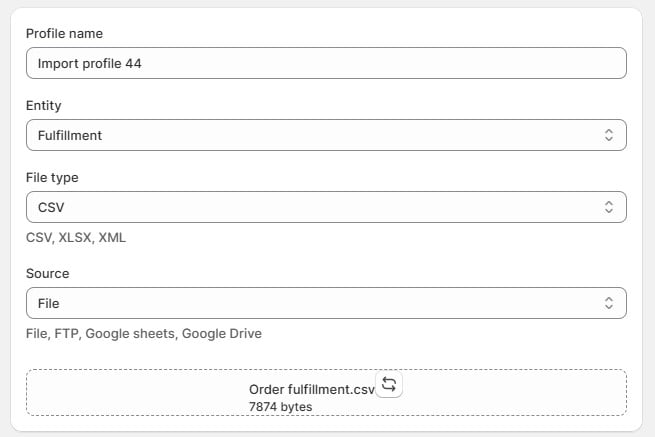
For a detailed overview of how to use the Import & Export Tool for Shopify, contact us now.
With products imported and order fulfillment automated, the next step is driving traffic to your Shopify store.
Step 6: Marketing & Scaling Your Dropshipping Store
Once your Shopify dropshipping store is set up with the right products and suppliers, the next challenge is driving traffic and converting visitors into paying customers. Marketing is the key to building a profitable dropshipping business, and using the right Shopify marketing strategies can make the difference between a store that struggles and one that scales successfully.
This section covers paid advertising, SEO for organic traffic, and email marketing — three of the most effective ways to grow and scale a dropshipping business. Additionally, we’ll look at how real dropshipping entrepreneurs on Reddit’s Entrepreneur community have successfully built their Shopify businesses.
Paid Advertising: Facebook & TikTok Ads for Shopify Dropshipping
One of the fastest ways to generate sales for a dropshipping store is through paid advertising. Social media platforms like Facebook and TikTok allow Shopify store owners to target highly specific audiences based on interests, demographics, and behaviors.
Facebook Ads are particularly effective for dropshipping because they allow businesses to run targeted campaigns using image, video, or carousel ads. With Facebook’s Lookalike Audience feature, store owners can reach people who resemble their best customers, making it easier to scale sales. TikTok Ads, on the other hand, are excellent for viral, trend-based products that appeal to a younger audience.
While paid ads can generate quick revenue, they require constant optimization. Running test campaigns, refining targeting, and adjusting ad creatives are essential to maintaining a profitable return on ad spend (ROAS). Many dropshipping businesses start with a small budget, gradually increasing ad spend as they identify winning products and ad creatives.
SEO Optimization: Driving Free Traffic to Your Store
While paid ads bring instant traffic, relying solely on them can be costly. This is where Search Engine Optimization comes in. Optimizing your Shopify store for search engines allows you to attract free organic traffic from Google, reducing reliance on paid advertising.
The foundation of Shopify SEO includes:
- Optimizing product titles and descriptions with relevant keywords.
- Writing detailed blog content related to your niche.
- Building backlinks from relevant websites to improve domain authority.
- Improving site speed and mobile-friendliness for better user experience.
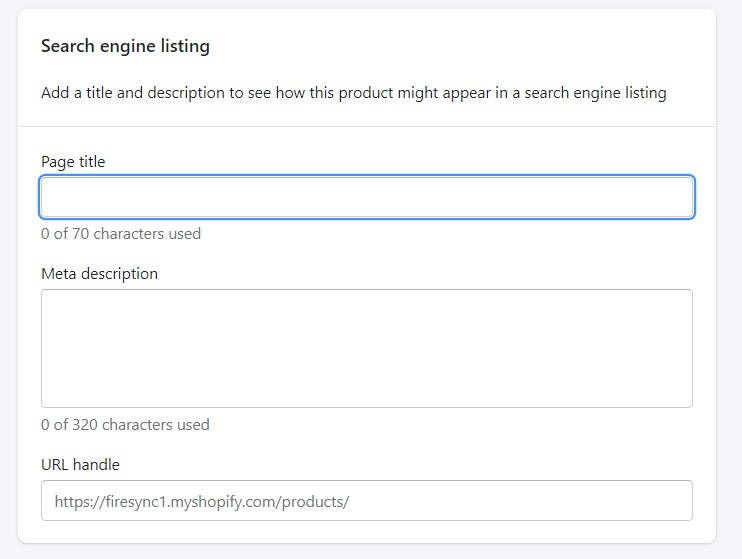
By implementing these strategies, store owners can rank higher in Google search results, making it easier for potential customers to find their products without paid advertising.
Email Marketing: Converting Visitors into Repeat Customers
Email marketing is a highly effective method for retaining customers and increasing lifetime value (Learn how to email customers on Shopify). Many dropshipping businesses focus too much on acquiring new customers while neglecting retention strategies. However, converting a past buyer into a repeat customer is far more cost-effective than acquiring a new one.
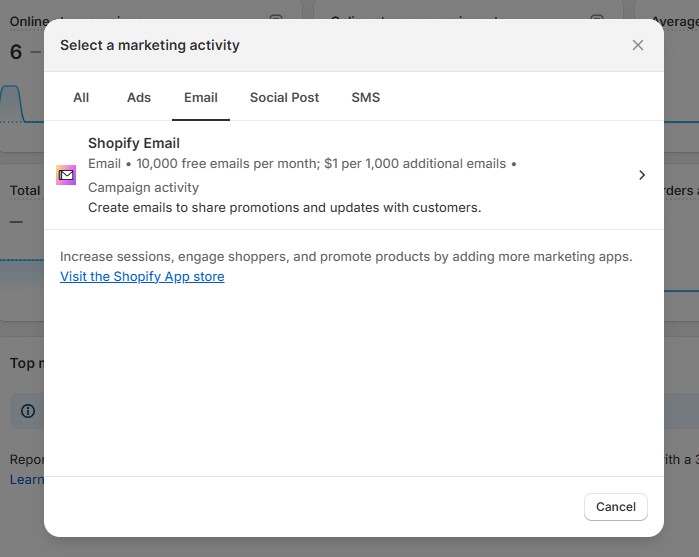
Setting up an automated email sequence can help store owners nurture leads, recover abandoned carts, and encourage repeat purchases. Shopify integrates with email marketing tools like Klaviyo, Omnisend, and Mailchimp, making it easy to send discount offers, new product launches, and personalized recommendations to subscribers.
Some of the best-performing email sequences for dropshipping include:
- Welcome Emails – Introduce your brand and offer a discount for first-time buyers.
- Abandoned Cart Emails – Remind visitors to complete their purchase with an incentive.
- Post-Purchase Follow-Ups – Thank customers and suggest complementary products.
By leveraging email marketing, Shopify store owners can maximize the customer lifetime value (CLV) and improve long-term profitability.
Lessons from Real Shopify Dropshipping Entrepreneurs
Many Shopify dropshipping store owners have shared their success stories and challenges on platforms like Reddit. The r/Entrepreneur community is filled with case studies from real business owners who have built and scaled Shopify stores. In one discussion on Reddit’s dropshipping thread, entrepreneurs share insights into how they successfully launched and grew their stores, what mistakes they made, and how they optimized their marketing strategies over time.
To read real experiences and gain valuable insights, check out this Reddit thread:.
While marketing and scaling are essential for growth, dropshipping businesses also face challenges such as supplier issues, refund disputes, and competition.
Dropshipping Challenges & How to Overcome Them
Store owners who dropship on Shopify often face issues related to slow shipping times, refund disputes, supplier reliability, and customer trust. Addressing these problems early can significantly improve customer satisfaction and long-term profitability.
This section will outline common Shopify dropshipping challenges and provide practical solutions to help store owners overcome them.
Slow Shipping Times and Unreliable Suppliers
One of the biggest drawbacks of traditional dropshipping — especially from AliExpress — is long shipping times. Customers today expect fast delivery, and waiting two to four weeks for a product can result in high refund rates, negative reviews, and lost sales.
To solve this issue, store owners can:
- Use suppliers with local warehouses – Platforms like Spocket and Zendrop offer U.S. and EU-based suppliers, reducing shipping times to just a few days instead of weeks.
- Clearly communicate estimated delivery times – Setting realistic expectations on product pages prevents misunderstandings.
- Offer expedited shipping options – Some suppliers provide premium shipping methods (ePacket, CJPacket) for faster delivery.
Refund and Return Policy Issues
Many suppliers do not offer hassle-free return policies, which can create customer dissatisfaction and chargebacks. Since dropshipping stores do not physically handle inventory, managing returns requires a proactive approach.
To reduce refund-related issues:
- Create a clear and fair refund policy – State refund conditions in a dedicated Refund Policy page in Shopify.
- Choose suppliers with flexible return policies – Some Spocket and Zendrop suppliers offer free returns for defective or incorrect items.
- Offer store credit instead of refunds – This can minimize revenue loss while still keeping the customer happy.
Customer Trust and Brand Credibility
Since many dropshipping stores sell non-branded, widely available products, customer skepticism can be a major barrier to conversions. Unlike established e-commerce brands, new Shopify dropshipping stores must prove their legitimacy before customers feel comfortable making a purchase.
To build trust, store owners should:
- Add real customer reviews and testimonials – Use apps like Loox or Judge.me to display photo and video reviews from buyers.
- Provide accurate and detailed product descriptions – Copying generic supplier descriptions often raises red flags for shoppers. Writing unique, benefit-driven descriptions improves credibility.
- Invest in a professional-looking store design – A poorly designed website with low-quality images and inconsistent branding signals untrustworthiness. Even “Powered by Shopify” in the footer can cause concerns.
- Offer a strong money-back guarantee – A risk-free shopping experience increases buyer confidence and reduces cart abandonment.
Scalability and Profit Margins
As dropshipping stores grow, store owners often struggle with low profit margins, increasing ad costs, and supplier inconsistencies. Since dropshipping involves buying products individually rather than in bulk, profit margins are typically lower than traditional retail models.
To improve profitability and scale efficiently, store owners can:
- Negotiate better pricing with suppliers – Once a product gains traction, suppliers are often willing to offer discounts for consistent, high-volume orders.
- Introduce upsells and bundles – Selling complementary products together increases the AOV.
- Optimize Facebook and Google Ads – As ad costs rise, refining targeting strategies and using lookalike audiences can improve ROAS.
- Expand to multiple suppliers – Relying on a single supplier increases risk. Partnering with multiple dropshipping suppliers ensures a stable product supply.
Conclusion: Is Shopify Dropshipping Worth It in 2025?
Shopify dropshipping remains a viable and profitable business model, but it is far from passive income. While the low startup costs and lack of inventory management make it appealing, success requires strong marketing strategies, reliable suppliers, and automation tools to streamline operations. Without these, many dropshipping businesses struggle with slow shipping times, refund issues, and rising ad costs.
The key to Shopify dropshipping success lies in choosing the right suppliers, leveraging automation apps like DSers, AutoDS, and Spocket, refining marketing strategies across Facebook, Instagram, and TikTok, and working with SEO strategies. Store owners who use data-driven product selection and test niches before scaling tend to outperform those who rely on trending but oversaturated products. Starting with a small budget and gradually reinvesting profits is the best approach for long-term profitability.
For those looking for a more stable alternative, Shopify offers Shopify Collective, a built-in sourcing solution that allows retailers to connect directly with trusted Shopify-based suppliers for faster fulfillment and better product quality. While traditional dropshipping still offers opportunities, platforms like Shopify Collective may provide more control over branding and logistics.
Ultimately, dropshipping on Shopify is still worth it in 2025, but only for those willing to treat it as a real business. The most successful dropshippers are those who continuously optimize their store, automate operations, and focus on customer experience rather than just chasing quick profits.




